[WIP] Roman Trade Ship -- looking for ship building input
-
I am basing my ship on some literature, a multitude of drawings and toy models. Unfortunately it's very difficult to pin down the details. If anyone knows--
- The swan. Keep it as a glorified plank? If not, any suggestions on giving shape to it?
- I have no idea how the rigging should really look like in an ancient Roman trade ship.
- The oars. Their configuration varies wildly. Some pictures put the oar controls on the stern deck, while others have the oars on the observation deck. Some pictures have the oars inside an elaborate wooden framework appended to the hull, some don't. Some pictures indicate the oars could be rotated on two angles: up/down and sideways. Furthermore: how do they keep the oars from sliding into the sea?? Figuring out how to model the oar controls is the most difficult part so far, as I have no solid reference... The oar controls are currently a work-in-progress.
- The central plank on the hull. Is it too big, relatively? Also: should it jut out inside, too? The central plank size currently "affects" the size of the swan figurehead in the stern.
- The ladder. How should I secure it?
- Edit: I know the length might be an issue, but I can make the ship longer with relatively few modifications and I'm not yet sure what the final width to length ratio will be.
If anyone wants to try their hand at making the oar controls I can pm them the model link.
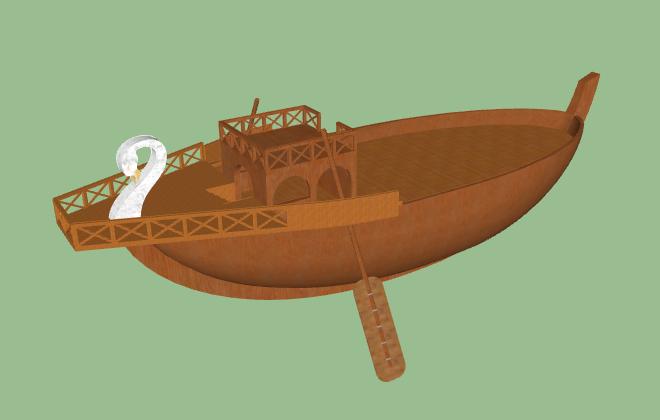
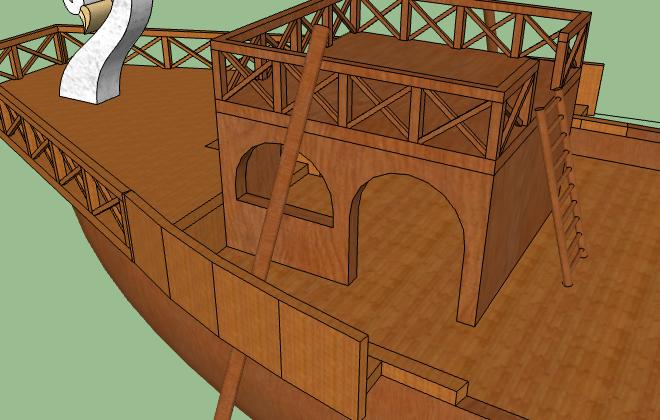
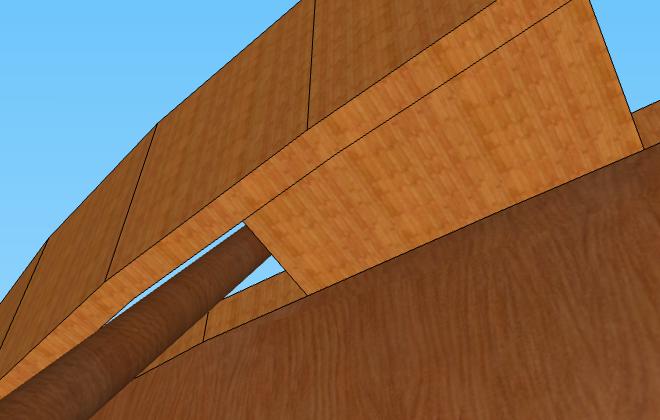
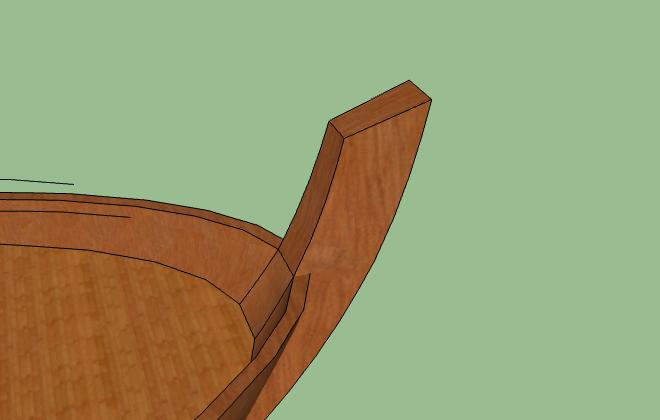
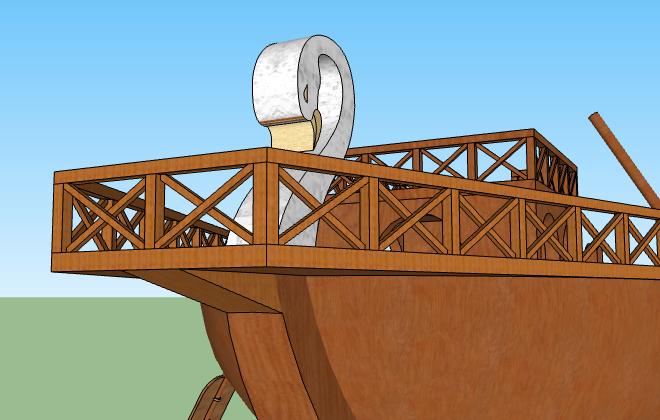
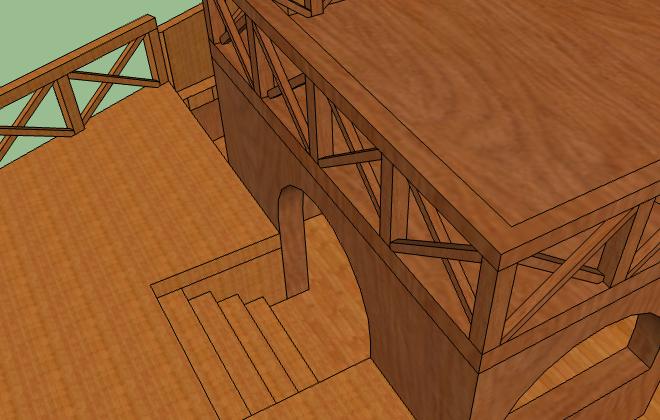
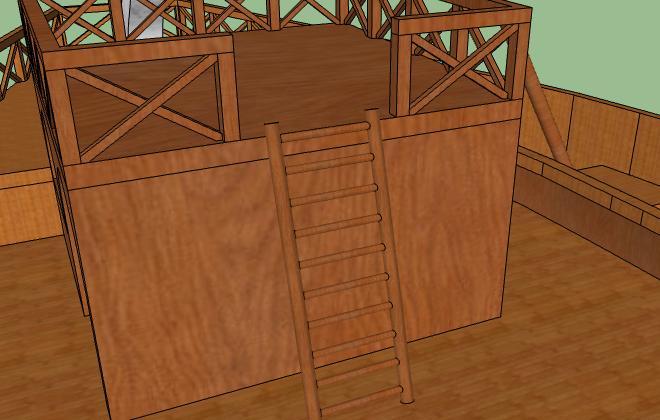
-
Nice ladder

-
i'd hate to meet the guy who could wield those oars!

-
@xrok1 said:
i'd hate to meet the guy who could wield those oars!

Lol.
 There's supposed to be some sort extension handle attached to the oars, but I'm not quite sure how it should be modeled.
There's supposed to be some sort extension handle attached to the oars, but I'm not quite sure how it should be modeled. -
Hi Agamamnus,
Nice project. I will try to collect some "wisdom" on the details although you are right - they are scattered and the ancient depictions do not provide sufficient info.
I know this will not be a big help but here is a nice "View from the sea" at Lucentum (currently Alicante, Spain) with a similar ship:
http://www.h2g2.hu/peregrinus/movie/movie_viewfromthesea.html -
Cool, nice find! That ship is exquisitely modeled. I'm guessing the modelers for that ship were able to get a lot of info for it, and the scale seems good. It does help.
-
By central plank, I assume you mean keel. It would project outside because it helps the ship with directional stability (tracking in a straight line. On the inside it would project enough to attach the ribs.
One source of rigging info might be ancient coins, pottery, or mosaics.
A small pic can be found at: http://library.thinkquest.org/04oct/01723/wpe17.jpg
Best ship models has a set of plans for $21.00. See:
http://bestshipmodels.com/index.php?main_page=popup_image&pID=54&zenid=82053838878d782ce23be7c3b6430c08As for oars, a vessel like that is essentially wind powered. What you show are steering oars and in any for I suspect they are a bear to operate. There should be a cross piece through the top to help twist them in the water. I suspect a couple hours spent googling will help you find a ton of information.
-
See steering oar carved in stone at:
http://upload.wikimedia.org/wikipedia/commons/4/40/Rudder_of_a_Roman_Boat_%28RG_Museum_Koeln%2C_Germany%29.JPGThis one seems to be mounted on the stern. Don't assume they were used in pairs they were often attached to only one side of the ship. Often the right side. That is where we get the name starboard "steerboard" as the custom was to have it on the right side.
Egyptions used double steerboards linked together.
Viking used only one on the right side.
http://www.aspects.net/~janus/Drakkar.gifThe mid point of the steerboard was often connected to the hull by a rope as no one man would have the strength to keep it in the water as the vessel picked up speed. In fact the length of the upper cross piece suggestit might have required multiple steermen in rough water.
-
@roger said:
This one seems to be mounted on the stern. Don't assume they were used in pairs they were often attached to only one side of the ship. Often the right side. That is where we get the name starboard "steerboard" as the custom was to have it on the right side.
[...]
Viking used only one on the right side.
http://www.aspects.net/~janus/Drakkar.gifIndeed Antique (Mediterranean) ships hat the oars on both sides. The northern way (including earlier Saxon, Frisian then "later" Viking) way was the right side only - thus the traditional English term.
-
What do you think prompted the move from steerboard to the rudder? Better metal working skills that allowed a more secure attachment.
-
Yes but that was about a millennium later.
Advertisement







